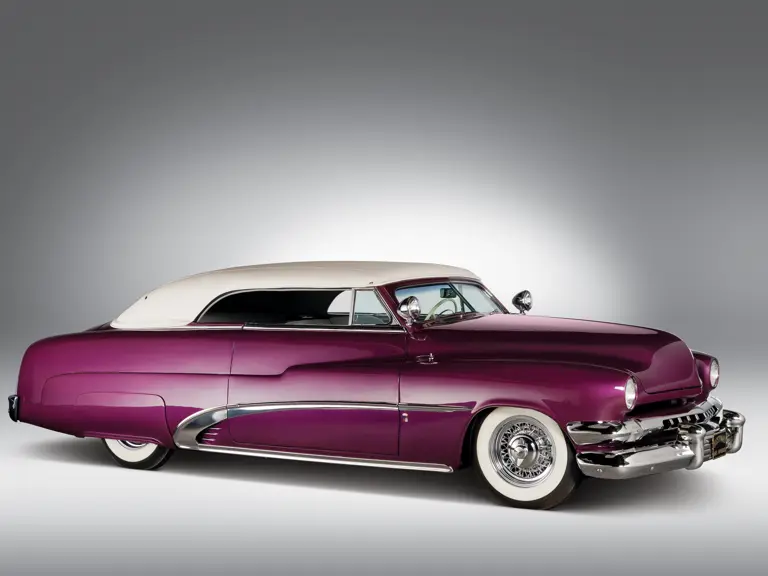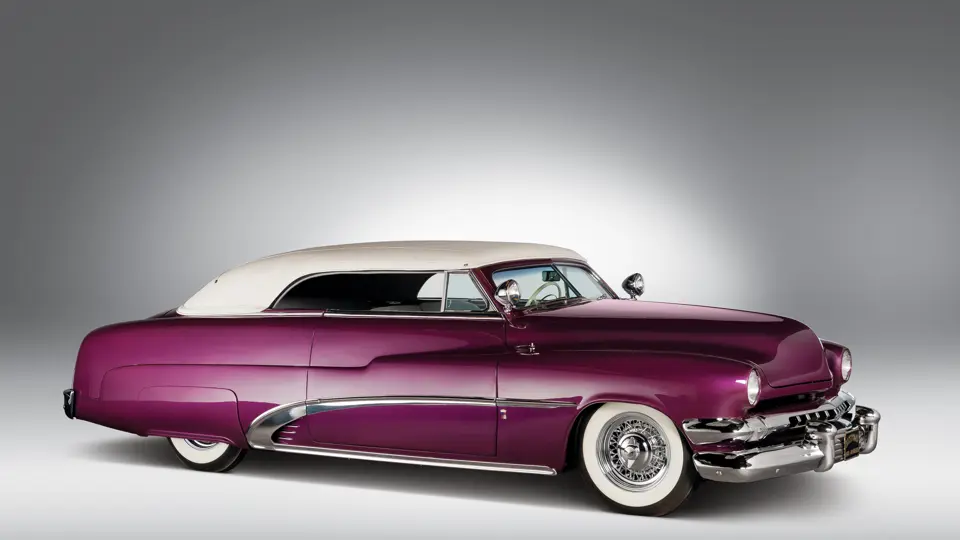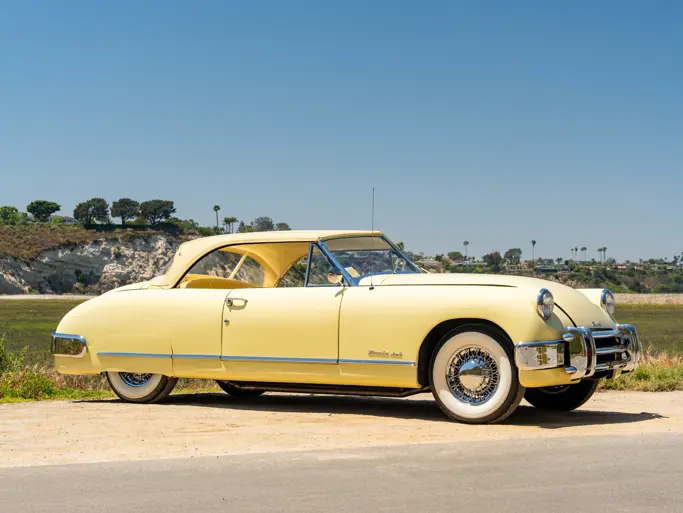Model 1CM. 255.4 cu. in. L-head V-8 engine, three-speed manual transmission, coil spring independent front suspension, live rear axle with semi-elliptic leaf springs, and four-wheel hydraulic drum brakes. Wheelbase: 118"
• A period custom by George Barris
• Trendsetting cosmetic modifications and styling
• Built for Universal Pictures film Running Wild
Certain cars, like the 1957 Chevy, have broad appeal across the collector community, while others, like the Deuce coupe or 1936 Ford, capture the hearts of hot rodders. Among the custom car hobby, however, it’s the 1949-51 Mercury that holds broad sway, perhaps because of a single icon: the 1955 Warner Brothers film Rebel Without a Cause starring James Dean. In that film a very mildly customized 1949 Mercury coupe, Dean’s ride, became symbolic for a generation of teens who came of age during the 1950s. The custom car movement was near its zenith, and thousands of California youth were eager to take their Mercurys to such gurus as Gil Ayala, Darryl Starbird and George Barris, in search of individuality.
George Barris is rightfully known as the “King of the Kustomizers.” With his brother Sam, he began modifying cars in their native Chicago before World War II. After the war, they set up shop in Los Angeles, building “kustom kars” for private customers. By 1950, their fame had spread, and the movie industry came calling. It is no surprise, then, that Universal Pictures came to Barris for a signature car to use in their upcoming film Running Wild, starring William Campbell, Keenan Wynn and Mamie van Doren, who of course was one of the famous Hollywood sex symbols alongside Marilyn Monroe and Jayne Mansfield. The film is a fun crime drama focusing on the battle between the police and young car thieves—a perfect background for the hip subculture of car customizing that this stunning Mercury coupe owes its creation to.
Like many custom Mercurys, this car began life as a Los Angeles-built coupe. At Barris Kustoms it was lowered, nosed, decked and given frenched headlights in preparation for its use in the film. A single grille bar, with Cadillac-like center section, replaced the Mercury “comb” motif. Full skirts were added to the rear fenders and side scoops to the hood. The original roof was dispensed with and replaced with a white Carson padded top. The doors were converted to solenoid operation with hidden buttons. Side trim from a 1953 Buick was added, along with chrome wire wheels and twin Appleton pillar-mounted spotlights. The car was painted in a single hue of mauve, repeated on the stock dashboard, which carries a correct Mercury AM radio mated to a power-operated antenna. It also has Mercury’s fresh-air heater.
The interior is upholstered in grey leather with white pleated inserts, harmonizing with grey carpet on the floor. The pleated theme is repeated on the headliner. Although the customizing was done many years ago, both the body and interior remain in very good condition. The Mercury flathead V-8 engine was treated to Edelbrock heads, dual two-barrel carburetors and Fenton exhaust headers. Dual exhausts exit through the rear bumper. The provenance of the car is substantiated by Barris Kustom emblems on the front fenders and similar decals on the vent windows. B.F. Goodrich Silvertown whitewall tires on the Kelsey-Hayes wire wheels complete the picture.
With such famous television cars as the Munsters’ Koach to his credit, the work of George Barris is highly sought after by collectors. This ’51 Custom Mercury, with its telltale modifications, is an excellent example of his trendsetting work.




 | Boca Raton, Florida
| Boca Raton, Florida


